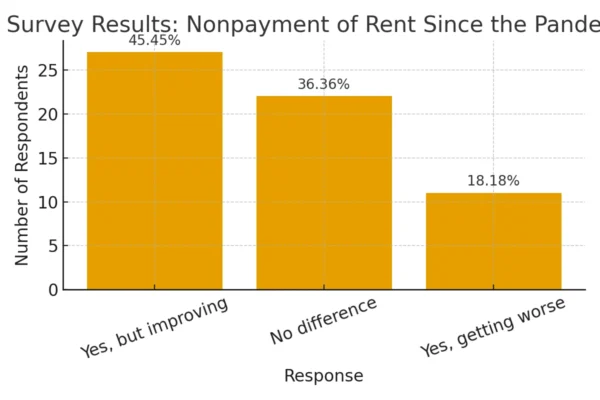Is a Lease Option or an Option to Buy a Good Deal for Landlords?
 The Pros and Cons of Offering a Lease Option
The Pros and Cons of Offering a Lease Option
Homeownership. It’s the American dream. But for some Americans, it always seems just beyond reach. While some people are choosing renting as a preference, others rent out of necessity. Sometimes it’s bad credit or not enough money for a down payment that keeps them from achieving that dream of owning their own home.
Everything old is new again and the concept of a lease option or a rent-to-own option is once more gaining in popularity with those who cannot secure a mortgage from a lender. Simply put, the tenant signs an agreement, separate from the lease, that authorizes the landlord to retain a certain amount of their monthly rent to be put toward the home’s purchase price.
The question is: Are these plans beneficial to the property owner? According to Forbes, “Lease options, blending the buy-and-hold and buy-and-sell strategies of real estate, might be the best of both worlds for the real estate investor who plays his or her cards right.”
What is a Lease Option?
A lease option involves two participants, the landlord and the tenant, and is made up of two contracts, the lease agreement and the option agreement. The lease allows the tenant to pay rent and live in the home for a specific amount of time, while the option agreement provides the tenant with the opportunity to buy the home at the end of the lease. Although the option money accrued each month does not apply toward the down payment on the home, a portion of it may apply to the purchase price.
The lease option is not a sales contract. It does not obligate the tenant to buy the home. Although the fee paid to the seller is usually non-refundable, there may be an additional deposit required when and if the actual sales agreement is signed. While the tenant is not required to buy the home, the lease ensures that no one else is able to purchase it until the end of the option period. However, it does obligate the landlord to sell the property if the tenant exercises their option to buy it.
What are the benefits of a lease option to the landlord?
When a tenant is renting a home with a lease option, they are paying a higher rent than the market is asking in anticipation of part of that rent being applied to their down payment. Believing that the house will one day be their own, they are more conscientious about paying their rent on time and maintaining the property. They are less likely to “skip out” since they already have a financial stake in the home after paying the non-refundable option fee and monthly contributions toward the down payment.
In addition to a consistent monthly income and cash flow, the landlord may be able to require the tenant to handle the upkeep on the property, thus reducing maintenance costs.
What is a Lease Purchase?
Although very similar to the lease option, the lease purchase is a sale contract which provides for the property owner to receive money from the tenant for the right to purchase the property at a later time. Whereas a lease option requires the landlord to sell the property, the lease purchase requires both the landlord and the tenant to complete the sale provided that the lessee can obtain a mortgage loan. For this reason, it is very important that the tenant understand whether the landlord is offering a lease option or a lease purchase and what the difference is.
The agreement can specify the sale price of the home, often slightly higher than its current market value, or the buyer and seller might agree to have the house appraised when the option is executed. If the tenant decides to purchase the home, they then apply for bank financing and if they are approved for a mortgage, the landlord is paid in full. The agreed-upon portion of the monthly lease payment is applied to the down payment. If the tenant does not choose to purchase the home, the lease purchase expires at the end of the lease.
Many landlords include a provision in the lease purchase that requires the tenant to pay the taxes and insurance as well as handle the maintenance and repairs which would normally be the responsibility of the property owner.
Lease Purchase Checklist
In addition to the normal lease agreement, the lease purchase agreement should include the following items:
- Duration of the agreement: The length of time for which the option is valid.
- Purchase price of the home: Either an agreed-upon sale price or the market value of the home at the time of sale.
- Rent credit: An amount above the monthly rent that becomes part of the buyer’s down payment should they agree to purchase the home. If the option to buy is not executed, this amount is not refundable to the renter.
What are the benefits of a lease purchase to the landlord?
In addition to the benefits of a lease option, such as a higher rent income and a more reliable tenant who is trying to improve their financial situation, the lease purchase offers the possibility of a large profit at the end of the agreement. If the agreement specifies that the tenant will pay market value at the time of purchase, the property owner could realize a significant appreciation of the home’s value. If the tenant defaults or does not follow through on purchasing the home, the landlord retains the option fee and the extra monthly amount that was intended to supplement the down payment.
What are the drawbacks of rent-to-buy options?
Although the benefits of a lease purchase are appealing, there are some important disadvantages to consider. If the property owner has agreed on the purchase price at the time of signing the agreement, they run the risk of selling the home for less than the current market value. They should always consider the market volatility in their area when agreeing on a sale price years in the future. They also might regret the length of time it will take before they realize a cash profit on their investment. And since the agreement is an option, the tenant may choose not to purchase the home or may not qualify for a loan. The landlord could then end up with a property that is lower in value than when the option was initiated, thereby reducing their profits.
Since a renter most likely enters into a lease purchase because they do not have sufficient cash or credit for a down payment, it is imperative that the landlord does a thorough tenant credit check prior to signing a lease purchase contract in order to understand the applicant’s financial situation. The seller might also meet with a mortgage banker to see if the tenant will likely qualify for a loan when the time comes.
When considering entering into a lease purchase agreement, the property owner should consult with their accountant regarding capital gains or losses and a real estate attorney about any pertinent regulations in their state.
Entering into a lease option or lease purchase agreement with a renter who is trying to attain homeownership can be a financial win for a property owner. It can also bring a sense of satisfaction that they have also helped someone realize their part of the American dream.













 Accessibility
Accessibility